#pakistan jobs 2020
Text
#army public school aps murree road rawalpindi jobs 2022#aps kuldana jobs 2023#2023 aps kuldana jobs#balochistan public service commission jobs 2023#public service commission jobs 2023#federal public service commission jobs 2023#new jobs 2023 in pakistan today#latest jobs vacancies 2023#patriata chairlift and cable car murree#army school admission form 2020#murree patriata chair lift 2022#jobs in pakistan 2023#balochistan public#govt jobs in pakistan 2023
0 notes
Text
Latest Jobs in NRSP October 2022 - National Rural Support Programme Jobs
Latest Jobs in NRSP October 2022 – National Rural Support Programme Jobs
Jobs Description
Latest Jobs in NRSP October 2022 has been announced through the advertisement and looking Interested, Dynamic , Experience, Brilliant Candidate to Full fill these Positions with a Handsome salary Package and Allowance According to Department Policies. In these New Jobs in Faisalabad the eligible Male/Female candidates from across the country can apply through the procedure…

View On WordPress
0 notes
Text
Five years since Indian Prime Minister Narendra Modi’s government stripped Jammu and Kashmir of its autonomous status, the central government’s iron-fisted approach to the region has left it more vulnerable to regional and geopolitical threats.
While Kashmir Valley, which has withstood the brunt of armed insurgency since 1989, continues to simmer with militancy-related violence, the theater of terrorism has now extended into the otherwise peaceful province of Jammu. Since 2019, at least 262 soldiers and 171 civilians have died in more than 690 incidents, including the February 2019 Pulwama terrorist attack. The unsustainable and disproportionate loss of lives underscores the risks to both regional stability and India’s national security.
In 2019, the Modi government revoked Article 370 of the Indian constitution, which granted the state of Jammu and Kashmir its special status, annihilating the contested region’s symbolic autonomy. Concurrently, the central government also imposed an indefinite curfew in the region and used internet shutdowns and arrests to control and suppress the local population. The result was a transformed landscape. Already scarred by militarization, Kashmir became enmeshed in barbed wire.
This undemocratic exercise, though later stamped and endorsed by India’s Supreme Court, has since spurred further legal changes. For example, the local population no longer has access to exclusive protections that previously allowed only permanent residents of Jammu and Kashmir to apply for government jobs and buy property in the state.
In March 2020, the government repealed 12 and amended 14 land-related laws, introducing a clause that paved the way for a development authority to confiscate land and another that allowed high-ranking army officials to declare a local area as strategically important.
Local residents are appalled at the ease with which government agencies can now seize both residential and agricultural lands in the name of development and security—enabling mass evictions and the bulldozing of houses that are disproportionately affecting Muslim communities and small landowners.
Meanwhile, the ecological fallout from introducing massive road and railway networks, coupled with the addition of mega hydroelectricity projects, is polluting riverbeds and causing villages to sink. Since 2019, there has been a lack of local representation which could act as a buffer against massive development projects, most of which now fall under New Delhi’s governance. Meanwhile, the region’s unemployment rate, as of 2023, remains high at above 18 percent, as compared to the national average of 8 percent.
Over the last few years, the Modi government has also squashed dissent in the region by redirecting the military to maintain surveillance and control of the civilian population. According to the Forum for Human Rights in Jammu and Kashmir, over 2,700 people were arrested in the region between 2020 and 2023 under India’s contentious Unlawful Activities (Prevention) Act and the Public Safety Act. Those arrested include journalists like Fahad Shah and Sajad Gul, human rights defenders like Khurram Pervez, and prominent lawyers like Mian Qayoom and Nazir Ronga.
Modi’s repressive policies have deepened the trust deficit between Kashmiris and the Indian government. The top-down administration has further sidelined local bureaucrats and police officers, further widening the gap between the central government and local ground realities.
All of this has not only pushed the local population into distress, but also jeopardized India’s already fragile relations with its two nuclear neighbors, Pakistan and China.
The Kashmir conflict, rooted in the 1947 partition of India, has led to three major wars and several military skirmishes between India, Pakistan, and China. And though the region has always been contentious—India controls more than half of the total land, while Pakistan controls 30 percent, and China holds the remaining 15 percent in the northeast region near Ladakh—Modi’s aggressive handling has further provoked its neighbors.
Following the revocation of Article 370, the region was split into two separate union territories—Jammu and Kashmir forming one and Ladakh forming another, with both falling under the central government’s control.
This redrawing of the region’s internal borders, which signaled New Delhi’s assertions of reclaiming the Chinese-occupied territory near Ladakh—as well as India’s increasing tilt towards the United States—resulted in a deadly clash between India and China in 2020 and another one in 2022. Despite diplomatic efforts to resolve tensions over the disputed Himalayan border, New Delhi has accused Beijing of carrying out “inch by inch” land grabs in Ladakh since 2020.
Meanwhile, Pakistan-administered Kashmir has been rocked by mass protests of its own this year, owing to the country’s political and economic crisis, exacerbated in part by the abrogation of Article 370. Those living in Pakistan-administered Kashmir fear that Pakistan may similarly try to dilute the autonomy of the region.
With refugees flooding in from Afghanistan on its west amidst Imran Khan’s standoff with the Pakistani Army, Islamabad has been on edge and looking for diversionary tactics. The deepening of Pakistani-Chinese relations, including military ties, has contributed to a volatile mix.
But Kashmir’s vulnerability has worsened partly because of India’s own tactical blunders, too. The last decade witnessed a spurt in home-grown militancy, but since 2019 the landscape has been dominated by well-trained militants from across the Pakistani border who have access to sophisticated weapons and technology.
Indian security forces, including paramilitaries and the local police, have turned a blind eye to these emerging threats, especially in the twin districts of Rajouri and Poonch along the border with Pakistan. It is in this area that the impact of terror attacks has been most felt.
The region is home to the nomadic Gujjar-Bakerwal communities and the ethnolinguistic Paharis. These groups are parts of divided families straddling the India-Pakistan border, and this shared cultural linkage between the Indian and Pakistani sides has been weaponized in the past by intelligence networks of both countries.
The Indian armed forces have historically relied on the Gujjar-Bakerwal communities for intelligence gathering in part because of their nomadic lives and deep knowledge of the region’s topography. However, since 2019, the evictions of nomads from forest lands, following the amendment of several land-related laws, as well as affirmative actions for Paharis, a rival ethnic group, have led to the disenchantment of the Gujjar-Bakerwals—and an eventual loss of traditional intelligence assets for India.
Another blunder has been the redeployment of troops from Jammu to the border with China in the northeast, following China’s incursions in Ladakh’s Galwan Valley in 2020. This has left Jammu dangerously exposed to militants who have been infiltrating the region from across the line of control on the western side and carrying out their operations with a fair degree of success.
In 2024 alone, Jammu has witnessed numerous attacks which have resulted in the deaths of 16 soldiers and 12 civilians. In June, for example, the region experienced one of its deadliest attacks when militants opened fire on a bus carrying Hindu pilgrims, killing nine and injuring over 30.
Kashmir’s internal politics has the potential to spill over and push the region into disaster. While India has made some significant strides in international diplomacy under Modi, it tends to neglect the neighborhood where the risks to India’s national security remain the highest. Its diplomatic engagement with China comes in fits and starts but diplomacy with Pakistan remains nonexistent, despite the resumption of a ceasefire in 2021. And while India considers the removal of Jammu and Kashmir’s special status an internal matter, Pakistan sees it as a provocation. All in all, there is a dangerous lack of engagement between the two nuclear rivals in South Asia.
In theory, the ongoing regional elections in Jammu and Kashmir provide a glimmer of opportunity for the people to choose their own local government for the first time in a decade. However, irrespective of who wins the elections, the local leaders will lack the power to enact meaningful change, given that the region remains under the control of New Delhi following its demotion from a state to two union territories.
For instance, Ladakh does not have a legislative assembly, and while Jammu and Kashmir have an elected assembly, the real powers are vested in the hands of a governor, who was appointed to lead the region by the Modi-led central government. As recently as July, the Indian government ruled to further expand the governor’s oversight powers, delivering a blow to local politicians and voters.
Much more needs to be done to change the status quo. Though it remains unlikely, New Delhi must consider meaningful solutions that could assuage some of the political wounds inflicted by the complete erosion of Jammu and Kashmir’s autonomy, including, for example, the restoration of statehood to the region. In order to win back the trust of Kashmiris, the Indian government must reinstate civil liberties and deliver on its promise to provide economic development and jobs.
To improve the region’s safety, Indian agencies must acknowledge their security lapses and repair their broken intelligence networks. And while the Indian security forces must not lower their guard against terrorist activities, terrorism should not be proffered as an excuse when it comes to the normalization of relations in the neighborhood.
Neither Pakistan, nor India can afford the war which is looming over their heads. Diplomatic negotiations, including over Kashmir, must begin with a sense of urgency.
3 notes
·
View notes
Text
Meeting the target of limiting heating to 1.5C
At Cop26 in Glasgow, countries agreed to limit global heating to 1.5C above pre-industrial levels. The pledges on emissions cuts they came forward with were not enough to meet this goal, however, so they agreed to return this year with strengthened commitments. Few have done so – only 24 submitted new national plans on emissions to the UN in advance of Cop27.
Likelihood: 0/5
Verdict: There will not be enough progress here to meet the 1.5C goal, but there is a baby step forward – the UN estimates that the improved plans that have been submitted will bring down temperatures by about 0.1C. But we are still heading for a disastrous 2.5C of heating on current policies.
Fulfilling promise of $100bn a year on climate finance
Since 2009, poor countries have been promised $100bn (£87bn) a year from 2020 to help them cut greenhouse gas emissions and adapt to the impacts of extreme weather. This target has not been met, and will not be met before next year.
Likelihood: 0/5
Verdict: The rich world has caused the climate crisis, but the poor world – with tiny emissions in comparison – is bearing the brunt. The longer rich countries fail to fulfil their promises, the less trust there is in them among developed nations.
Adaptation funding
Most of the money that does go to the developed world in climate finance is destined to help middle income countries with projects to cut emissions, such as wind and solar farms. But what the poorest countries most need is help with ways to adapt to the extreme weather they are already seeing, such as regrowing forests, building flood barriers and putting in place early warning systems. Only about a fifth of climate finance is currently for adaptation, and nations promised last year to double that.
Likelihood: 1/5
Verdict: The Egyptian Cop27 presidency launched an action plan for adaptation as a key focus of its first week, so there will be progress but the target of doubling adaptation finance will not be met yet this year.
Loss and damage
One of the biggest issues at Cop27 is loss and damage. This refers to the most devastating impacts of the climate crisis, so extreme that countries could not adapt to them. Examples include the record droughts threatening nearly 150 million people with severe hunger in Africa, and the record floods that hit Pakistan this September. Poor countries say they need funding for rescue and reconstruction when such disasters strike, but rich countries have so far been reluctant to come up with any way of funding this.
Likelihood: 2.5/5
Verdict: Loss and damage is firmly on the official agenda for this conference – that was assured after a late night of negotiations at the start – but it will not be settled here. Countries have only embarked on the process of setting out what loss and damage means and how help for poor countries can be structured. While a few countries have come up with funding, discussions on how to find the hundreds of billions needed will carry on long after delegates leave Egypt.
World Bank reform
The World Bank is not on the agenda of the UN climate summit – it’s a completely separate institution to the UN. But many world leaders here have called for reform of the bank, which they said had failed to focus on the climate crisis and was not fit for the 21st century. Beleaguered World Bank president David Malpass is attending Sharm el-Sheikh, but his job will be looking a lot more shaky by the end of this fortnight.
Likelihood: 4/5
Verdict: If the World Bank is reformed, which is looking more and more necessary and likely, the pressure brought to bear at Cop27 will be a important factor in achieving it.
Movement on African gas
Many African countries are sitting on large reserves of fossil fuels, and with soaring gas prices around the world would like to exploit those reserves. Oil and gas companies would like to invest in them too, but rich countries and climate experts warn that doing so will just add to the climate crisis that is already having disastrous impacts on the poorest on the continent. African countries scent hypocrisy, pointing out that the rich have already burned their supplies.
Likelihood: 5/5
Verdict: There will certainly be movement on African gas at this Cop, but in which direction? Oil and gas investors are lurking in every corner of the conference centre, and they will be looking to go home with climate-busting deals.
#cop27#odds#world politics#climate change#climate action#world bank#loss and damage#fossil fuels#1.5c#finally moving this from my drafts 8 days after it was published
35 notes
·
View notes
Text
A dozen poor countries are facing economic instability and even collapse under the weight of hundreds of billions of dollars in foreign loans, much of them from the world’s biggest and most unforgiving government lender, China.
An Associated Press analysis of a dozen countries most indebted to China — including Pakistan, Kenya, Zambia, Laos and Mongolia — found paying back that debt is consuming an ever-greater amount of the tax revenue needed to keep schools open, provide electricity and pay for food and fuel. And it’s draining foreign currency reserves these countries use to pay interest on those loans, leaving some with just months before that money is gone.
Behind the scenes is China’s reluctance to forgive debt and its extreme secrecy about how much money it has loaned and on what terms, which has kept other major lenders from stepping in to help. On top of that is the recent discovery that borrowers have been required to put cash in hidden escrow accounts that push China to the front of the line of creditors to be paid.
Countries in AP’s analysis had as much as 50% of their foreign loans from China and most were devoting more than a third of government revenue to paying off foreign debt. Two of them, Zambia and Sri Lanka, have already gone into default, unable to make even interest payments on loans financing the construction of ports, mines and power plants.
In Pakistan, millions of textile workers have been laid off because the country has too much foreign debt and can’t afford to keep the electricity on and machines running.
In Kenya, the government has held back paychecks to thousands of civil service workers to save cash to pay foreign loans. The president’s chief economic adviser tweeted last month, “Salaries or default? Take your pick.”
Since Sri Lanka defaulted a year ago, a half-million industrial jobs have vanished, inflation has pierced 50% and more than half the population in many parts of the country has fallen into poverty.
Experts predict that unless China begins to soften its stance on its loans to poor countries, there could be a wave of more defaults and political upheavals.
“In a lot of the world, the clock has hit midnight,” said Harvard economist Ken Rogoff. “ China has moved in and left this geopolitical instability that could have long-lasting effects.”
HOW IT'S PLAYING OUT
A case study of how it has played out is in Zambia, a landlocked country of 20 million people in southern Africa that over the past two decades has borrowed billions of dollars from Chinese state-owned banks to build dams, railways and roads.
The loans boosted Zambia’s economy but also raised foreign interest payments so high there was little left for the government, forcing it to cut spending on healthcare, social services and subsidies to farmers for seed and fertilizer.
In the past under such circumstances, big government lenders such as the U.S., Japan and France would work out deals to forgive some debt, with each lender disclosing clearly what they were owed and on what terms so no one would feel cheated.
But China didn't play by those rules. It refused at first to even join in multinational talks, negotiating separately with Zambia and insisting on confidentiality that barred the country from telling non-Chinese lenders the terms of the loans and whether China had devised a way of muscling to the front of the repayment line.
Amid this confusion in 2020, a group of non-Chinese lenders refused desperate pleas from Zambia to suspend interest payments, even for a few months. That refusal added to the drain on Zambia’s foreign cash reserves, the stash of mostly U.S. dollars that it used to pay interest on loans and to buy major commodities like oil. By November 2020, with little reserves left, Zambia stopped paying the interest and defaulted, locking it out of future borrowing and setting off a vicious cycle of spending cuts and deepening poverty.
Continued in the link
16 notes
·
View notes
Photo
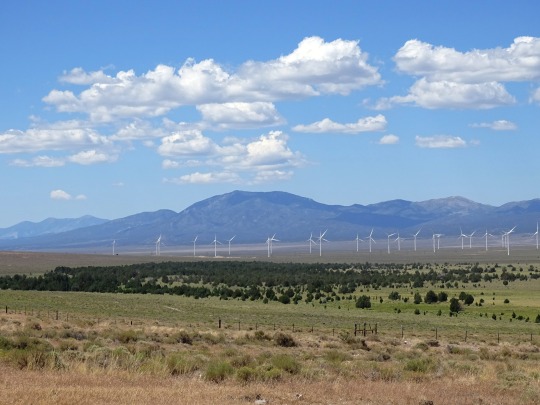

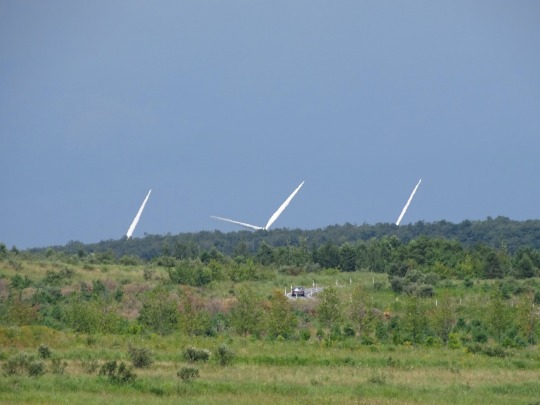

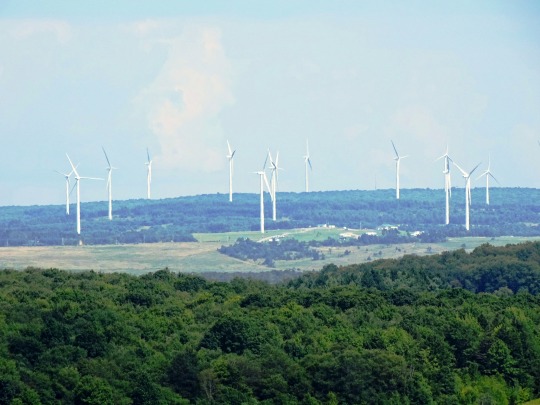
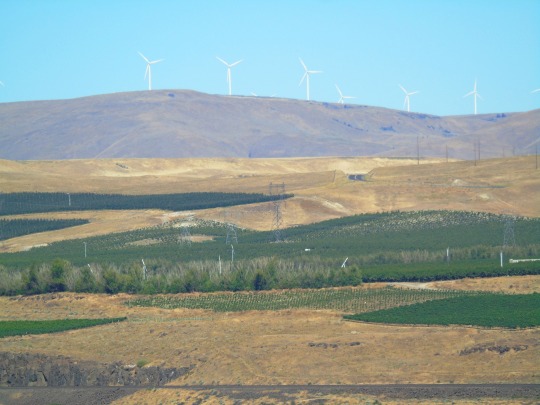

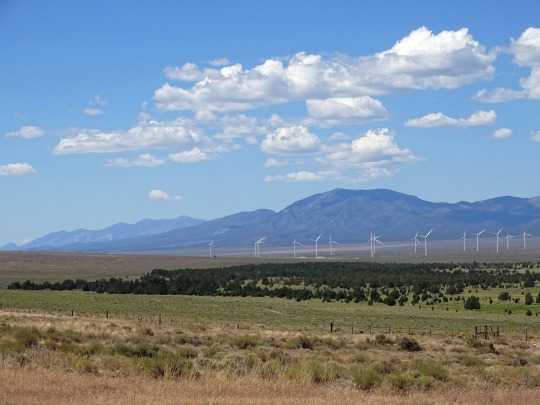
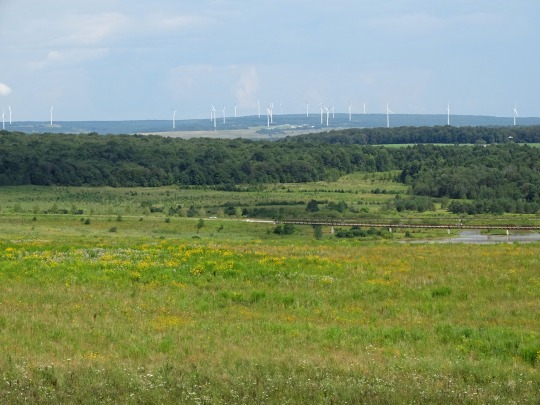

Global Wind Day
Global Wind Day is celebrated on June 15 every year. It’s an international event to raise awareness regarding the importance of wind energy and the power it holds to change the world, improve energy systems, and decarbonize economies. Investing in wind energy means spending less money on fossil fuel imports, resulting in a smaller carbon footprint and minimized CO2 for cleaner air on our planet. On this day, we learn not just about how wind power leads to a greener planet, but also about job creation and employment opportunities for many people.
History of Global Wind Day
The history of wind energy as a power source traces back thousands of years. As early as 5,000 B.C., Egyptians had already been using wind power to propel their boats on the Nile River. This was improved upon by the Chinese in 200 B.C. as they invented wind-powered water pumps. Furthermore, people from the Middle East and Persia discovered windmills with woven-reed blades to grind grain with more speed and less manpower, which eventually led to more efficient food production.
It wasn’t until the 1st century A.D. that Heron of Alexandria created the windwheel. According to historians, this was the first recorded wind-driven wheel to power a machine. It included a small windmill that powered a piston that forces air through the organ pipes. According to records, it made a sound like that of a flute.
In the Middle Ages, windmills became a popular device in Pakistan, Afghanistan, and Iraq. They were used to pump water and grind sugarcane, which eventually boosted their grist milling industry. This technology was ultimately brought to Northwestern Europe in 1180 and became a popular tool to grind flour — a system that still exists up to date.
In the late 1800s and early 1900s, colonists brought windmills to the United States. Homesteaders and ranchers installed thousands of water pumps and small wind-electric generations in Western America.
The possibilities of wind power were further explored due to oil shortages in the 1970s. This forced everyone to find an alternative source of energy to generate electricity. Due to this scarcity, the U.S. federal government installed thousands of wind turbines in California to encourage the use of renewable energy sources. By 2020, the U.S. share of electricity generation via wind power grew to 8.4% — a huge spike compared to the 1990s 1%.
Global Wind Day timeline
1st Century A.D. The First Wind-Powered Machine
Greek engineer Heron of Alexandria discovers the first wind-driven wheel that powers a machine.
1180s Vertical Windmills
Northwestern Europe uses vertical windmills to grind flour.
1900s 2,500 Windmills Reaches 30 Megawatts
About 2,500 windmills in Denmark produce a combined power of 30 megawatts used to grind grains and pump water.
1970s Global Oil Shortage
The global oil shortage leads people to explore wind energy in a more advanced manner to be an alternative to electricity.
1980s Wind Turbines in California
The U.S. Federal Government installs thousands of wind turbines in California in support of renewable energy sources.
Global Wind Day FAQs
What are the types of wind energy?
The three main types of wind energy are utility-scale wind, offshore wind, and distributed wind.
What are four manufacturers in the world that uses wind turbines?
Vestas (Denmark), Siemens Gamesa (Spain), Goldwind (China), and General Electric (U.S.)
Which country uses the most wind power?
China uses the most wind power, generating approximately 236,402 megawatts in 2019 alone.
How to Observe Global Wind Day
Fly a kite outside
Attend seminars about wind energy
Take it to social media
This may sound like a simple activity, but flying a kite outside is an effective way to explain to your kids how wind energy works. Discuss how wind power propels the kite to stay afloat in the air. It’s also a great bonding activity that’s both fun and educational.
In an era where the climate crisis is peaking, wind energy is the future. Attend seminars on Global Wind Day to learn about the benefits and new technologies of wind energy as an alternative power source. Educating yourself is key.
Raise awareness about wind energy and its benefits on social media. Share scholarly articles or Global Wind Day event pages to your newsfeed. Use the hashtag #GlobalWindEnergy and keep your friends and family in the loop about one of the most pivotal solutions to decarbonizing the planet.
5 Interesting Facts About Wind Energy
The wind industry solves employment problems
The first modern turbine
Commercial turbines are powerful
The largest wind turbine
It doesn’t need water
The wind industry employs 650,000 people in different capacities around the world.
The first modern turbine was built in Vermont, U.S.
One commercial wind turbine can provide power to 600 homes.
The largest wind turbine was created in Hawaii, which stands 20 stories tall and each blade is as long as a football field.
Wind energy is the only power source that doesn’t need water.
Why Global Wind Day is Important
It’s for the good of the planet
It raises awareness
Wind energy is cost-effective
With the rise of global warming and other crises, wind energy is one solution to help lessen pollutants. Its long-term effects are advantageous to the new generation and to the generations that will come after.
People need to be proactive in highlighting the benefits of wind energy so that companies, governments, and other industries will adopt this technology as an alternative power source. The only way to make them proactive is to raise awareness. Education is key.
Global Wind Day helps us support the cost-effectiveness of wind energy. It’s one of the lowest-priced energy sources known today, which could potentially lower federal taxes.
Source
#Spring Valley#Nevada#Appalachian Mountains#Somerset County#landscape#countryside#nature#Somerset Wind Farm#Oregon#USA#Shepherds Flat Wind Farm#Middelgrunden Wind Turbine Cooperative#Denmark#Copenhagen#wind turbines#original photography#travel#vacation#15 June#GlobalWindDay#Pennsylvania#flora#forest#Atlantic Ocean#world day#international day#energy source
7 notes
·
View notes
Text
Promoting Responsible Tourism in Pakistan’s North West

Growing up, Muhammad Numan saw a cleaner, more natural environment in Khyber Pakhtunkhwa’s tourist destinations. But as time passed and tourism surged, the local landscape he once knew began to change. The influx of tourists resulted in a growing pile of litter across the otherwise scenic sites in the north.
The travel and tourism sector’s total contribution to Pakistan’s GDP was 5.9 percent in 2022 and 4.2 million jobs. This is sub-optimal considering the diverse tourist sites located across the country. Pakistan attracted ~US$ 16 billion in visitor spending in 2022 which is projected to touch ~US$ 30 billion in 2033.
Pakistan experienced an unprecedented surge in domestic tourism immediately after the Covid induced travel restrictions were lifted: For instance, in 2021 and 2022, over 1.2 million domestic and international tourists visited the country’s Khyber Pakhtunkhwa province alone.

To manage this increasing all-season footfall of visitors while harnessing its understated economic potential, the local authorities, communities, and private sector require resources, equipment and training without losing focus on green and inclusive tourism.
Determined to make a change, Numan, who now works as a manager at a local hotel in Swat district of Khyber Pakhtunkhwa, sought ways to mitigate the negative impact of the tourism industry on the ecosystem. That is when he came across the “Travel Responsibly for Experiencing Eco-tourism in Khyber Pakhtunkhwa” (TREK) initiative – a partnership between the Government of Khyber Pakhtunkhwa, World Bank (WB) and Nestlé Pakistan to promote and support responsible tourism initiatives.
TREK complements the ongoing activities of Khyber Pakhtunkhwa Integrated Tourism Development Project (KITE) project for heritage preservation and tourism infrastructure development. Since 2020, it has completed awareness campaigns for tourists, and training of local communities and hospitality businesses on waste management. TREK has trained over 650 participants from more than 150 hotels and restaurants in Khyber Pakhtunkhwa’s tourist areas. The beneficiaries also included local communities, local authorities and academia of Peshawar, Nathiagali, Abbottabad, Swat, Naran and Chitral districts.
These trainings concentrated on solid waste minimization, segregation, management, and recycling techniques. Public service messages on responsible tourism were also launched through social media and radio campaigns in Khyber Pakhtunkhwa and cities of Islamabad and Lahore. Most country’s domestic tourists are concentrated in these geographies and were thus able to receive communication on tourist helplines on the importance of keeping the sites litter-free.
10,000 reusable bags were distributed to tourists and the hotel association in tourist hotspots aiming to encourage their use and minimize littering. In parallel, the IDA-financed KITE project provided waste bins, garbage collection and compacting machinery to the local authorities in Nathiagali, Naran, Chitral and Kumrat districts of Khyber Pakhtunkhwa, and a few locations in Punjab province, and installed 50 tourist information signboards to complement the awareness campaigns.
TREK-November-2023-3.jpg
Tourist information sign boards in Galiyat, Pakistan
TREK-November-2023-2-Training-in-Abbottabad.jpg
TREK Awareness Workshop for Community and Local Government Participants
Incorporating the knowledge from these sessions, like several other participants, Numan introduced eco-friendly practices at his hotel. He also spearheads a community-funded clean-up initiative in his hometown of Mardan district. This initiative has transformed into a community-driven effort, with residents actively participating in regular clean-up drives. Such sustainable transformations encapsulate the very essence of what TREK envisions for communities throughout the province and beyond.
TREK has propelled its partners towards impactful activities by encouraging collaboration with the private sector. Its partner in the initiative, Nestlé Pakistan, is taking concrete actions to create circular systems that make it easier to collect, recycle and reuse products that use plastic. It is committed to designing 100 percent of its plastic packaging for recycling and expects to achieve a 95 percent target by 2025.
The Government of Khyber Pakhtunkhwa has allocated resources and supports its teams to ensure green and inclusive destination management in partnership with the private sector.
The project has also provided machinery for snow removal and solid waste management to local authorities to improve accessibility, traffic flow and promote sustainable tourism in the province.
TREK's inclusivity stands out, inviting participants from diverse backgrounds, including women, youth, and the transgender community. Zareen Akhtar, a social worker, and human rights activist who underwent TREK training, testified to the program's transformative impact. She acknowledged the newfound knowledge she gained, eager to share it with others. She emphasized that she’s one of the many women in this region who have had the opportunity to attend these trainings. “Inclusion of women not only has a wider social impact but also a major mindset shift in the region, allowing for a cohesive awareness within the social fabric of the community.”
Initiatives like TREK have the power to transform the tourism landscape in some of Pakistan's most pristine destinations and ensure that future generations continue to enjoy these in years to come. In its next phase, TREK will integrate additional players from the private and financial sectors of the country to launch activities that support community empowerment and investment mobilization for job creation.
By Kiran Afzal, Senior Private Sector Specialist, World Bank Pakistan, Touseef Khalid, Project Director, Khyber Pakhtunkhwa Integrated Tourism Development (KITE) Project, and Sheikh Waqar Ahmad, Head of Corporate Affairs and Sustainability, Nestlé Pakistan.
Read the full article
0 notes
Text
ENTRY- 4
Critical analysis of your internship applications
The Internship applications process included a deep understanding of my skills and experience. It was a clean step by step process to create a profile before applying for internship. The process starts from creating resumes, Cover letter and portfolio which are the key requirements to apply for internship.
Even though resume and cover letter were already prepared during past sessions, it was a challenging task to match it up with the internship job requirements. We were supposed to apply for three different internships consisting of different skills requirements and selection criteria. Different jobs have different requirements. Some ask for academic or technical qualifications, some call for specific personal qualities, while others demand a track record of achievement (Williams, 2008).
To overcome this challenging task the key process was to organize resume and cover letter inputs according to the internship requirements that match my skill set and memorize the skills and experience which was left behind. Great way to critically analyze the journey till. Considering how my skills and experience will benefit the organization where I wish to apply.
These internship programs not only improve students personal skills but also polish their professional growth and experience. Today, educational institutes, students and business recruiters are aware of the importance of internship programs (Sadia Anjum, 2020) Sadia Anjum. 2020. Future Business Journal. Impact of internship programs on professional and personal development of business students: a case study from Pakistan. (https://fbj.springeropen.com/articles/10.1186/s43093-019-0007-3

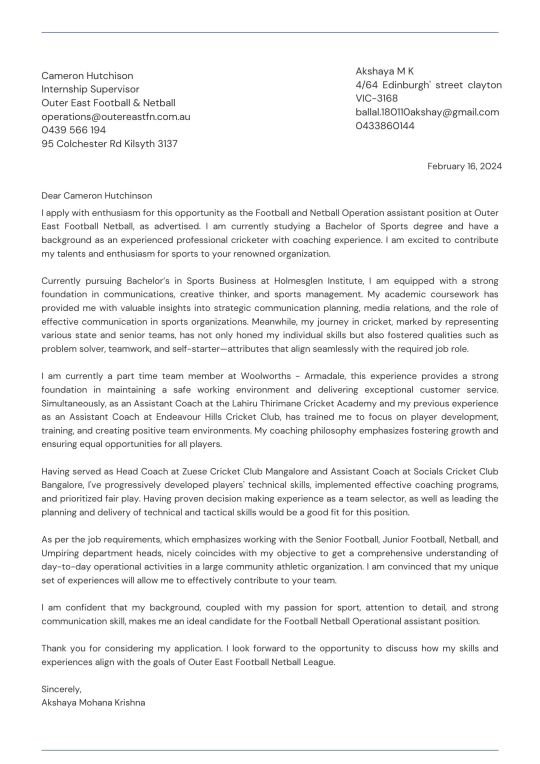

The first internship I applied for was with Cricket Victoria
Internship requirements - Cricket Victoria was seeking for a candidate for cricket operations communications intern role with selection criteria of Video editing experience, Experience in photography, Microsoft office suite of applications and with the skills – Punctuality, attention to detail, strong time management. etc
The Second internship I applied for was with Outer East Football and Netball
Internship requirements – Outer East Football and Netball were seeking for a candidate for Operations assisstant with skills which requires creative thinker, problem solver and ability to work as a part of a team and selection criteria of Ability to use Microsoft programs, ability to interact with the people from all backgrounds and submit a portfolio with previous experience in community sport.
The third internship I applied for was with Belgravia sports community.
Internship requirements – Belgravia sports community were seeking for a candidate for Sports business intern with selection criteria of Work closely with state and national bodies, documentations of procedures and processes etc
The responses I provided to each of the above applications aligned with the job requirements and my experience in the sports industry.
Reference
Williams. (2008). Ultimate job search: invaluable advice on networking, CVs, cover letters, interviews, psychometric tests and follow-up strategies (2nd ed.). Kogan Page Ltd.)
Sadia Anjum. (2020). Future Business Journal. Impact of internship programs on professional and personal development of business students: a case study from Pakistan. (https://fbj.springeropen.com/articles/10.1186/s43093-019-0007-3
0 notes
Text
Internship Part 8: Reflecting on Internship and Study
Wow.
Three years of hard work and here we are.
Journeying through being a mature aged student and dealing with knock backs with internships, it is hard not to feel a sense of accomplishment and pride in my achievements. Comparing how I approached post high school education and the lack of motivation to get work done in a timely manner, usually leaving it to the night before, this time was different. I was passionate about the subjects and ensured I got started early to give myself the best possible outcomes.
Looking back on the internship process, from the application to the undertaking, it is clear to see growth in multiple areas and something that I can honestly say is the best thing to have occurred in my life, setting me on a career path I am excited to journey through. As stated by Anjum (2020) “internship programs not only improve students’ personal skills but also polish their professional growth and experience”. This statement speaks to how I viewed internships before, during and after and played an important role in my passion to get the most out of them. By wanting to ensure the last three years were not going to be wasted and at the end I would be positioned with the greatest potential of landing a job in the sports media industry.
Taking pride in the organisation and the successes both on and off field has allowed me to get fully invested in the internship. This is important when it comes to bigger leagues like the AFL where there is a chance, I may get a job at a different club to the one I support, yet I still should be invested in the performance of the organisation to integrate properly.
This would not have been possible without the support of those who have journeyed with me, whether that is the lecturers, family, fellow students, and friends not studying alongside me in the last three years. It is something to remind myself in entering the next stage that it takes a village, it is better to be supported than not and to always ask for help when needed.

Leaving the ballpark one last time on a Saturday night (Woods, 2024)
Looking back on how often it was said by the course director and lecturers, it really sinks in now how crucial networking really is and something that I feel I could have done better during the study years but something I will improve on moving forward.
Being able to look back and realise the strategies I placed and the approach I took to each class and assignment made ma a better student and the ability to have done this allowed me to grow each time I was faced with a challenge or a difficult situation in study (BethMooreSchool, 2018).
Anjum, S. (2020). Impact of internship programs on professional and personal development of business students: a case study from Pakistan. Future Business Journal, 6(1). springeropen. https://doi.org/10.1186/s43093-019-0007-3
BethMooreSchool. (2018, April 29). Student Self-Reflection: Looking Back and Moving Forward. TWO WRITING TEACHERS. https://twowritingteachers.org/2018/04/29/student-self-reflection-looking-back-and-moving-forward/
0 notes
Text
Entry 8 - Your overall reflections on the internship and your studies
My overall internship experience has been tiring, but something that I was encouraged. Internships identify what I can do and what I do not want to do. It shows the perspective of a real-life working environment. It could be the next step in getting a career that you will like (Forbes, 2022). The internship programs given to us were good but wish we had more internships in different sports. Internship programs are related to the courses that we are doing, which can help us develop and gain more outside of the classroom and use what we have learned for our internships (Anjum, 2020).
My Baseball Australia internship was one of the best experiences I had since moving to Melbourne. I have loved the game so much since I was young and felt so much excitement coming back to a baseball field. The role I did was really good since I was so interested in data analytics in sports. This gave me an opportunity to know and understand what is like working with the high-performance and data analytics department. The recent games I did were the best because I had a chance to sit beside the game production team. This can give me a chance and experience what it is like during gameday and the production crew. And I had a great supervisor guiding and discussing what was happening in the sports industry.
My Hockey Australia internship had some ups and downs. It started off very well with joining meetings, developing a live stream event, preparing for shipment to the events and assisting some of the departments with their spreadsheet. Then, it went downhill after not doing so much work and just joined the different events they had in their workplace.
But this internship experience is something I should be proud of doing. It really feels like going to normal full-time work, but we do not get paid. Hopefully, after I am done with Uni, this will lead me to get a full-time job in the sporting industry.
References:
Anjum, S. (2020). Impact of internship programs on professional and personal development of business students: a case study from Pakistan. Future Business Journal, 6(1), 2.
Forbes. (2022). The Importance Of Internships And The Invaluable Relationships They Bring. Forbes. https://www.forbes.com/sites/forbeshumanresourcescouncil/2022/08/12/the-importance-of-internships-and-the-invaluable-relationships-they-bring/?sh=1fc3ae417fd1


0 notes
Text
Latest Jobs in NADRA Peshawar October 2022 Walk in Interviews
Latest Jobs in NADRA Peshawar October 2022 Walk in Interviews
Jobs Description
Latest Jobs in NADRA Peshawar October 2022 has been announced through the advertisement and looking Interested, Dynamic , Experience, Brilliant Candidate to Full fill these Positions with a Handsome salary Package and Allowance According to Department Policies. NADRA Regional Head Office Peshawar invites Walk-in Test / Interview of eligible Pakistani Nationals of respective…

View On WordPress
0 notes
Text
Indian woman crosses border for love, goes to Pakistan to meet man she met on Facebook
Anju became friends on the social media platform Facebook a few months ago.

Even as the Pakistani national Seema Haider remained in the discussion for illegally entering India through the Nepal border with her four children, another similar incident has come to the fore. Now, an Indian woman has crossed the border to meet her lover.
A married Indian woman from Rajasthan’s Bhiwadi district has travelled to Pakistan’s northwestern Khyber Pakhtunkhwa province to meet a man she befriended and fell in love with on Facebook, police said on Sunday.
Nasrullah and Anju became friends on Facebook
The woman, identified as Anju (34), had gone across the border leaving behind her two children and husband to meet the man named Nasrulla. Nasrullah, who works in the medical field and Anju became friends on Facebook a few months ago, ARY News reported.
After reaching Lahore, she called her husband (Arvind) and told him that she was in Lahore to meet a friend and will return to India in three-four days. But Arvind came to know via media that Anju had gone across the border to meet her lover. The couple has a 15-year-old girl and a five-year-old son.
Arvind further said that he had no idea that she had gone to meet a named Nasrullah in Pakistan. He said her passport was issued in 2020 as she wanted to apply for a job abroad. He said that before this she had never gone out of the city. She once had gone to Faridabad to meet her relative.
Reportedly, Anju had also bought a new SIM to go to Pakistan, whose number she had not even given to her husband.
Anju was married in 2007
According to the reports, was born in Kailor village in Uttar Pradesh and lived in the Alwar district of Rajasthan. She reached Lahore three days ago and she is now in the Upper Dir district of Pakistan’s Khyber Pakhtunkhwa. Arvind has been working in Bhiwadi since 2005 and was married in 2007 to Anju. Anju is also employed at a private firm.
Anju was was initially in police custody but was released after her travel documents were verified. “She was allowed to go after all the travel documents were found to be in order. They were provided security to ensure no untoward incident takes place and which can bring a bad name to the country,” a source told news agency PTI.
Seema Haider story
Recently, Seema Ghulam Haider, a Pakistani mother of four, sneaked into India to live with Sachin Meena, a Hindu man she got in touch with while playing PUBG in 2019. Seema (30) and Sachin (22) are currently leaving in the Rabupura area of Greater Noida. According to the couple, Seema and Sachin Meena got in touch while playing PUBG in 2019 and a dramatic love story unfolded between the two living more than 1,300 km apart, in countries not too friendly to each other. Seema and Sachin live in the Rabupura area of Greater Noida, near Delhi, where he runs a provision store, according to Uttar Pradesh Police.
While Seema was arrested on July 4 for illegally entering India without a visa via Nepal with her four children and Sachin was put behind bars for sheltering the illegal immigrants. At present, the police and investigative agencies are investigating Seema. It was earlier reported that the security agencies were planning to send Seema back to Pakistan soon, but later it became clear that she will be in India till the investigation is completed.
However, unlike Seema who entered India without a visa via Nepal with her four children all aged below seven years, Anju has travelled to Pakistan legally from India via the Wagah-Attari border.
0 notes
Text
Former KGB agent Yuri Bezmenov exposes the four stages of a Communist takeover of a country in rare 1984 interview
Former KGB agent Yuri Bezmenov exposes the four stages of a Communist takeover of a country in rare 1984 interview
He was instructed by the KGB to not bother the 'political prostitutes' but instead surround himself with large conservative media persons, rich filmmakers, academicians, and cynical egocentric people
19 June, 2020 Dibakar Dutta Former KGB agent Yuri Bezmenov exposes the four stages of a Communist takeover in a rare 1984 interview
In an interview with G. Edward Griffin in 1984, former KGB informant Yuri Bezmenov had exposed the insidious operations of the Soviet Union and how the Communist apparatus viciously overtakes the conscience of a country.
He began his interview by revealing that people who towed the Soviet foreign policy, in their home country, were elevated to positions of power through media and manipulation of public opinion. However, those who refused to do so were either subjected to character assassination or killed. Bezmenov cited the example of the city of Hue in Vietnam where 1000s of people were executed in one night for being sympathetic to the United States. The city was under the seize of a mass political organization named Viet Cong for about 2 days when the mass killings took place. Even though the Central Intelligence Agency (CIA) could never understand how the operation was carried out, Bezmenov pointed out the extensive network of local informants set up by the Soviet Union to execute those who didn’t tow its line.
Recounting his time in India, the KGB informant revealed how he was shocked to discover the list of known pro-soviet journalists in India who were doomed to die. He said that even though those journalists were idealistically leftists, yet the KGB wanted them dead as ‘they knew too much’. Benzmenov emphasised, “Once the useful idiots (leftists), who idealistically believe in the beauty of Soviet socialism or Communism, get disillusioned, they become the worst enemies.”
The former KGB informant reiterated there are no grassroots revolutions but one engineered by a professional, organised group. He revealed that the Awami League party leaders were trained in Moscow, Crimea, and Tashkent. He also added that the Indian Government chose to unsee the movement of 1000s of ‘students’ from India to East Pakistan (now Bangladesh). His colleague at the Soviet Consulate in Kolkata had discovered guns and ammunition in his basement in a box titled ‘Printed material’ scheduled for Dhaka University. It indicated the role of the Soviet Union in arming the /Mukti Bahini/ during the war.
The ideal recruits of KGB
He was instructed by the KGB to not bother the ‘political prostitutes’ but instead surround himself with large conservative media persons, rich filmmakers, academicians, and cynical egocentric people. According to Benzmenov, the potential recruits and reputable people in the eyes of the KGB were narcissistic, greedy, morally devoid individuals who can help destabilise their country of origin. Citing the example of the United States, he stated that the KGB recruited professors and civil rights defenders to subvert and destabilise the country. “When their job is completed, they are not needed anymore. They know too much. Some (recruits) get offended when Marxists-Leninists come to power because they hoped they would come to power. That will never happen. They will be lined up against the wall and shot,” he remarked.
*https://www.youtube.com/watch?v=QfvXwuZ-bok*
The Plan to execute Indian journalists
The KGB informant reiterated that when the ‘useful idiots’ serve their purpose, they are either executed or exiled or held up in prisons. “We are a bunch of murders. There is nothing to do with friendship and understanding between the nations… We behave like a bunch of thugs in a country that is hospitable to us. I did not defect but I tried to get my message across. Nobody wanted even to listen, least of all to believe me,” he sighed recounting the inner turmoil he faced on learning about the scheduled execution of pro-Soviet Indian journalists known to him.
*Read- This ‘theory’ about Sonia Gandhi’s Russia visits and Rafale ‘controversy’ is catching attention on Twitter *
The Defection of Yuri Bezmenov
His decision to defect and switch sides came during the Bangladesh Liberation War which was described by an American correspondent as the ‘Islamic grassroots revolution.’ Under the patronage of the KGB, Yuri Bezmenov lived a lavish lifestyle. He was, however, in love with India so much so that he did not want the country to be ‘irreparably damaged’ under the Soviet influence. Despite an affluent career and labels of treason against the nation, he finally defected from the KGB.
And he disappeared as many had done in the past. The only possible difference was that he lived to tell the story. Interestingly, Indian newspapers carried ads citing a reward of ₹2000 for information on him. But, the informant had by then impersonated an American hippie and flew from Mumbai airport to Greece where he met with CIA officials. All of this happened under the nose of the KGB.
The concept of ‘Ideological Subversion’
Yuri Bezmenov explained that KGB was more concerned about the psychological warfare against the American government through ideological subversion rather than espionage activities, which constituted only 15% of their work. He highlighted how brainwashing techniques were used on the American population to infuse an ideology, distinct from Americanism. He further emphasised how manipulation of public opinion can make people reject obvious facts to cater to the existing perceptions and interests.
Demoralisation of a population
The former KGB informant stated that the Soviet Intelligence Agency used four methods to alter the mindset and behaviour of people in foreign countries. The first step is that of demoralisation which according to him took 15-20 years. During the phase, young people are influenced to question the integrity of a country and raise suspicions through media propaganda and academia. Perception takes the centre stage and facts become meaningless. He attributes it to the lack of moral standards in society.
For a population self-absorbed in a world of propaganda, and theories of Marxism and Leninism, truth loses its grip on the society. The older generation also loses control over the population due to consistent attacks on their moral fabric. Yuri Bezmenov revealed that the ‘demoralisation’ phase was completed before the interview and the Soviet Union was surprised at the ease of its execution. He also explained how those from the 60s were occupying high positions in the government, mass media, and civil services at the time of the interview. Yuri Bezmenov further claimed that another 20 years would take to create a new generation of patriotic American citizens.
Destabilisation, Crisis and Normalisation
As per the former KGB informant, destabilisation of a country also referred to as the second step, meant altering the nation’s foreign relations, economy, defence systems. He said that the process takes 2-5 years to execute. He stated that the Marxist-Leninist hold over the American defence and economic sector was ‘fantastic.’ Bezmenov said that he never thought that the process would be so easy to execute in the US when he landed there in 1971. He highlighted that a country could be brought to a state of crisis, the third step, in a short time as six weeks and cited the example of Central America to make his point.
Coupled with a violent change in power structure and economy, the fourth phase of normalisation is kicked in that can last indefinitely. The word normalisation is derived from Soviet propaganda that seeks to downplay a drastic change in a country as a normal phenomenon. “This will happen in America if you allow the Schumuks to bring the country to crisis, promise people all kinds of goodies and paradise on Earth, destabilise your economy, eliminate the principle of free-market competition, put a Big Brother government in Washington DC with benevolent things,” he remarked.
Yuri Bezmenov reiterated that the US was in a state of undeclared war, against the principles on which it was founded, under the Communist conspiracy. “You don’t have to be paranoid… Unless the United States wakes up! The time bomb is ticking every second and the disaster is coming closer and closer. Unlike myself, you will have nowhere to defect,” he emphasised.
Read the full article
0 notes
Text
Police in Pakistan said Friday they busted an organ trafficking ring when a missing 14-year-old boy was found in an underground lab after having his kidney removed.
The ring was responsible for luring young, vulnerable victims with promises of lucrative jobs and large payouts before removing their organs — mainly kidneys — to sell for up to 900,000 rupees ($4,000).
"It was only after we followed the evidence and leads that we discovered that there was an organ trafficking operation behind the boy's disappearance," Rehan Anjum, a spokesman for Punjab police, told AFP on Friday.
Six people were arrested.
"The boy told us that when he woke up there was an Arab man on the stretcher next to him, so we think that most of the clients were foreigners," Anjum said.
The gang's victims were taken to a medical testing lab used for clandestine organ transplant surgeries in the garrison city of Rawalpindi, near the capital Islamabad.
Facilities for such clandestine surgeries in Pakistan often lack proper medical equipment and standards, and patients have been known to die from complications as a result.
"I'm just grateful that the police found him alive, otherwise they had left him for dead," the boy's father told AFP in Lahore, from where the boy went missing.
Police said the doctors and surgeons involved in the operation had not been tracked down.
Pakistan outlawed the commercial trade in human organs in 2010, imposing a jail term of up to 10 years and fines in the hope of curbing the sale of organs to rich overseas clients by middlemen through exploitative means.
According to a 2020 analysis published by the National Library of Medicine, roughly 10% of all organ transplants worldwide are believed to be illegal — about 12,000 organs per year. The analysis called organ trafficking a "global problem with health and human rights consequences for millions of people, especially for those in vulnerable situations, such as migrants."
The illegal trade of human organs generates about $1.5 billion each year from roughly 12,000 illegal transplants, according to a 2017 report by Global Financial Integrity.
More than 100,000 people in the United States are waiting for an organ transplant. But only slightly more than half of them are expected to receive an organ within five years.
#nunyas news#yikes#wonder how big the number would be if they included china#also freaked at first because I thought it said oregon
12 notes
·
View notes
Text

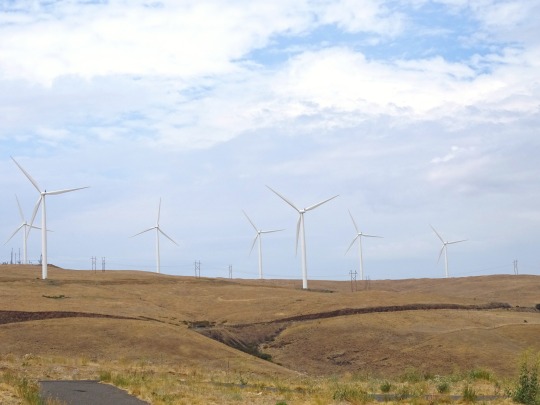
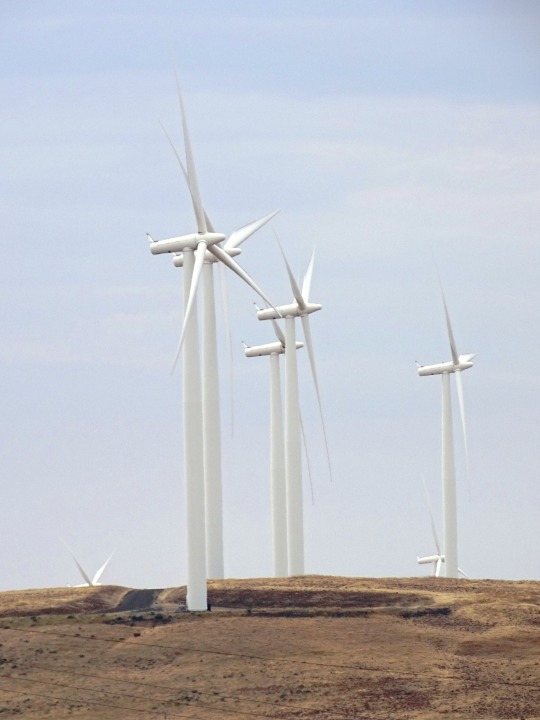
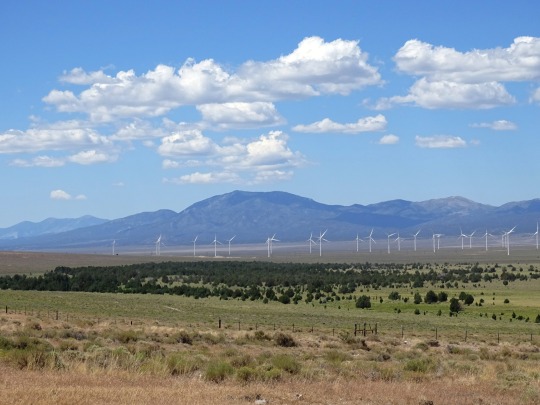
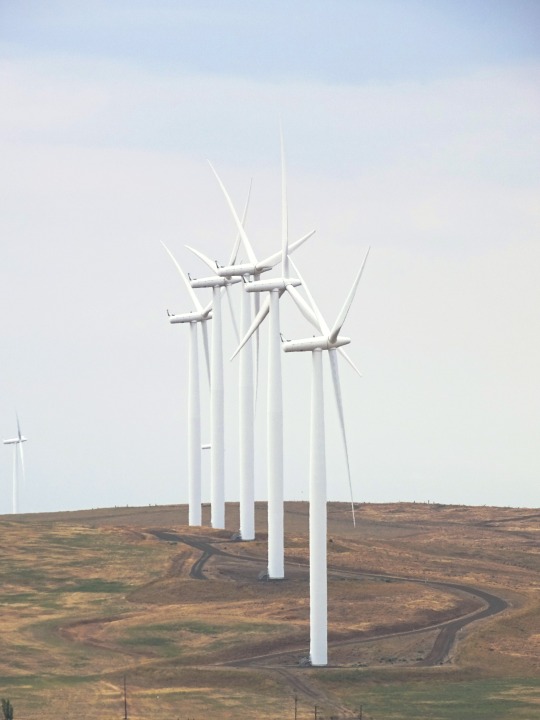

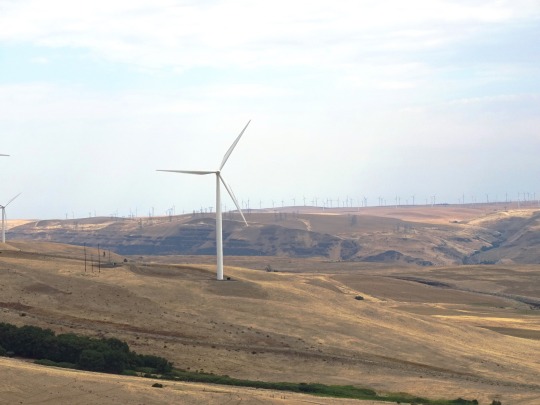
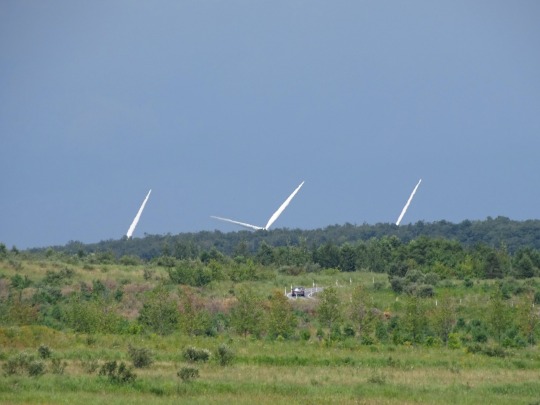
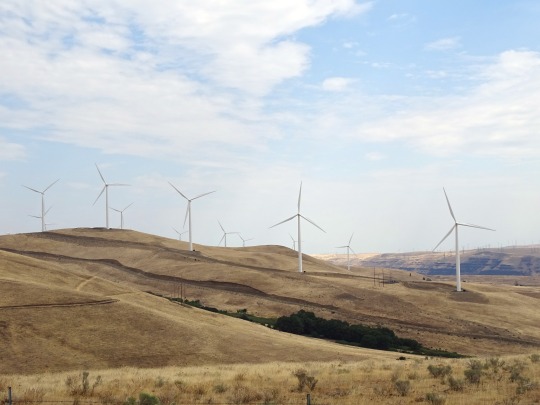
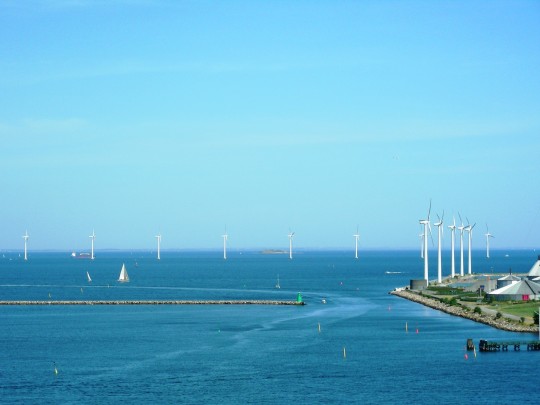
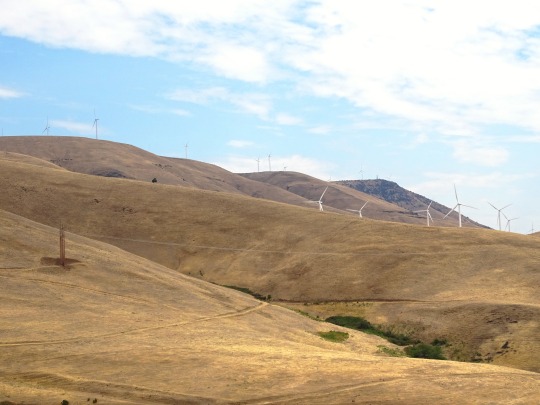
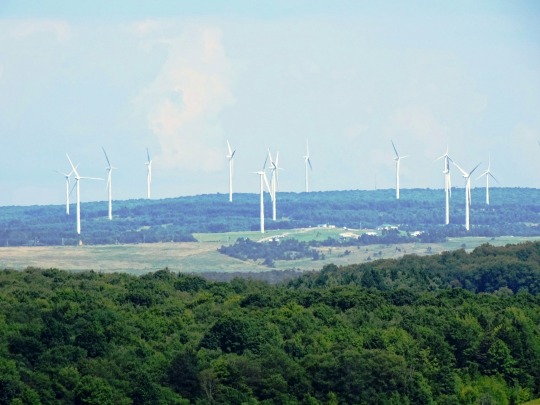
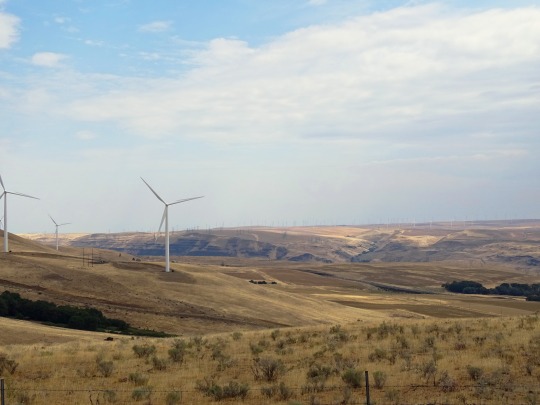
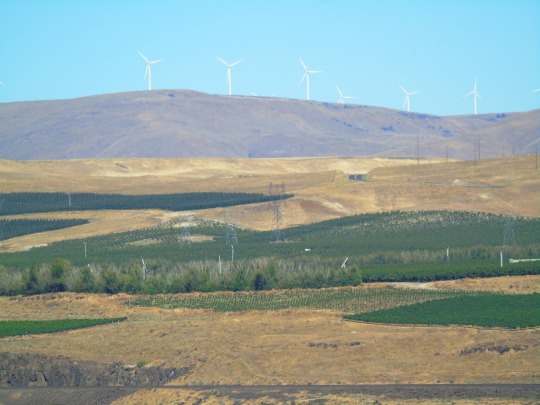

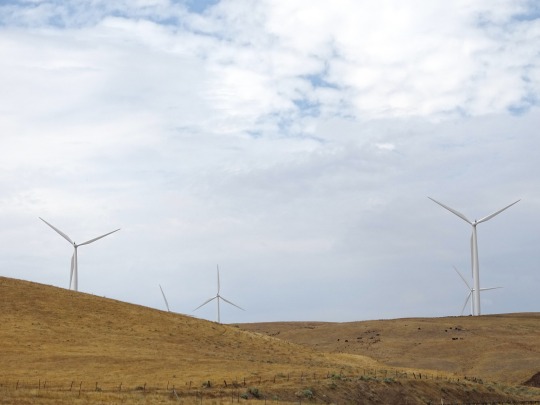
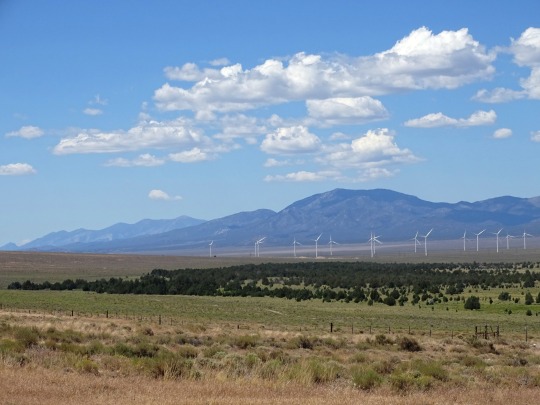
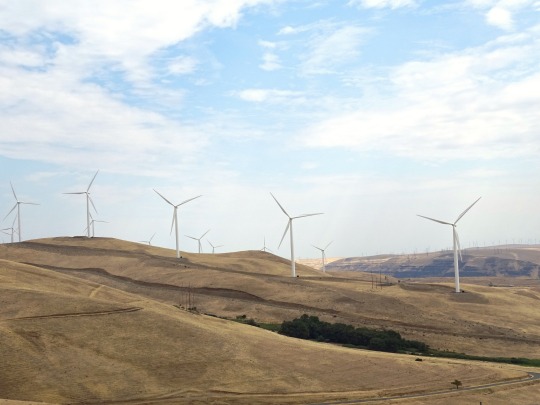
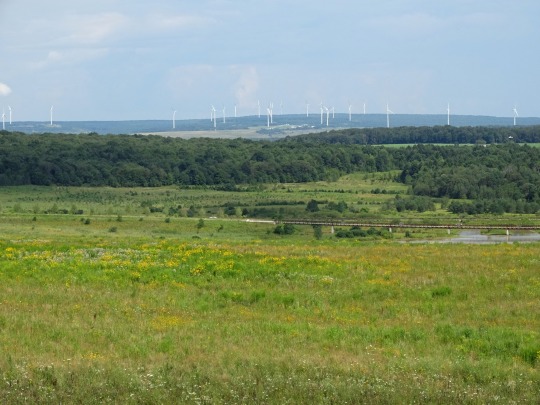

Global Wind Day
Global Wind Day is celebrated on June 15 every year. It’s an international event to raise awareness regarding the importance of wind energy and the power it holds to change the world, improve energy systems, and decarbonize economies. Investing in wind energy means spending less money on fossil fuel imports, resulting in a smaller carbon footprint and minimized CO2 for cleaner air on our planet. On this day, we learn not just about how wind power leads to a greener planet, but also about job creation and employment opportunities for many people.
History of Global Wind Day
The history of wind energy as a power source traces back thousands of years. As early as 5,000 B.C., Egyptians had already been using wind power to propel their boats on the Nile River. This was improved upon by the Chinese in 200 B.C. as they invented wind-powered water pumps. Furthermore, people from the Middle East and Persia discovered windmills with woven-reed blades to grind grain with more speed and less manpower, which eventually led to more efficient food production.
It wasn’t until the 1st century A.D. that Heron of Alexandria created the windwheel. According to historians, this was the first recorded wind-driven wheel to power a machine. It included a small windmill that powered a piston that forces air through the organ pipes. According to records, it made a sound like that of a flute.
In the Middle Ages, windmills became a popular device in Pakistan, Afghanistan, and Iraq. They were used to pump water and grind sugarcane, which eventually boosted their grist milling industry. This technology was ultimately brought to Northwestern Europe in 1180 and became a popular tool to grind flour — a system that still exists up to date.
In the late 1800s and early 1900s, colonists brought windmills to the United States. Homesteaders and ranchers installed thousands of water pumps and small wind-electric generations in Western America.
The possibilities of wind power were further explored due to oil shortages in the 1970s. This forced everyone to find an alternative source of energy to generate electricity. Due to this scarcity, the U.S. federal government installed thousands of wind turbines in California to encourage the use of renewable energy sources. By 2020, the U.S. share of electricity generation via wind power grew to 8.4% — a huge spike compared to the 1990s 1%.
Global Wind Day timeline
1st Century A.D. The First Wind-Powered Machine
Greek engineer Heron of Alexandria discovers the first wind-driven wheel that powers a machine.
1180s Vertical Windmills
Northwestern Europe uses vertical windmills to grind flour.
1900s 2,500 Windmills Reaches 30 Megawatts
About 2,500 windmills in Denmark produce a combined power of 30 megawatts used to grind grains and pump water.
1970s Global Oil Shortage
The global oil shortage leads people to explore wind energy in a more advanced manner to be an alternative to electricity.
1980s Wind Turbines in California
The U.S. Federal Government installs thousands of wind turbines in California in support of renewable energy sources.
Global Wind Day FAQs
What are the types of wind energy?
The three main types of wind energy are utility-scale wind, offshore wind, and distributed wind.
What are four manufacturers in the world that uses wind turbines?
Vestas (Denmark), Siemens Gamesa (Spain), Goldwind (China), and General Electric (U.S.)
Which country uses the most wind power?
China uses the most wind power, generating approximately 236,402 megawatts in 2019 alone.
How to Observe Global Wind Day
Fly a kite outside
Attend seminars about wind energy
Take it to social media
This may sound like a simple activity, but flying a kite outside is an effective way to explain to your kids how wind energy works. Discuss how wind power propels the kite to stay afloat in the air. It’s also a great bonding activity that’s both fun and educational.
In an era where the climate crisis is peaking, wind energy is the future. Attend seminars on Global Wind Day to learn about the benefits and new technologies of wind energy as an alternative power source. Educating yourself is key.
Raise awareness about wind energy and its benefits on social media. Share scholarly articles or Global Wind Day event pages to your newsfeed. Use the hashtag #GlobalWindEnergy and keep your friends and family in the loop about one of the most pivotal solutions to decarbonizing the planet.
5 Interesting Facts About Wind Energy
The wind industry solves employment problems
The first modern turbine
Commercial turbines are powerful
The largest wind turbine
It doesn’t need water
The wind industry employs 650,000 people in different capacities around the world.
The first modern turbine was built in Vermont, U.S.
One commercial wind turbine can provide power to 600 homes.
The largest wind turbine was created in Hawaii, which stands 20 stories tall and each blade is as long as a football field.
Wind energy is the only power source that doesn’t need water.
Why Global Wind Day is Important
It’s for the good of the planet
It raises awareness
Wind energy is cost-effective
With the rise of global warming and other crises, wind energy is one solution to help lessen pollutants. Its long-term effects are advantageous to the new generation and to the generations that will come after.
People need to be proactive in highlighting the benefits of wind energy so that companies, governments, and other industries will adopt this technology as an alternative power source. The only way to make them proactive is to raise awareness. Education is key.
Global Wind Day helps us support the cost-effectiveness of wind energy. It’s one of the lowest-priced energy sources known today, which could potentially lower federal taxes.
Source
#Spring Valley#Nevada#Appalachian Mountains#Somerset County#landscape#countryside#nature#Somerset Wind Farm#Oregon#USA#Shepherds Flat Wind Farm#Middelgrunden Wind Turbine Cooperative#Denmark#Copenhagen#wind turbines#original photography#travel#vacation#15 June#GlobalWindDay#Pennsylvania#flora#forest#Atlantic Ocean#energy source#tourist attraction#landmark#Global Wind Day#Linden Wind Farm#Washington
1 note
·
View note
Text
BBC 0431 15 Jun 2023
12095Khz 0357 15 JUN 2023 - BBC (UNITED KINGDOM) in ENGLISH from TALATA VOLONONDRY. SINPO = 55545. English, dead carrier s/on @0357z then ID@0359z pips and newsday preview. @0401z World News anchored by Chris Berrow. People in North Korea have told the BBC food is so scarce their neighbours have starved to death. The government sealed its borders in 2020 because of Covid19, cutting off vital supplies. It has also tightened control over people's lives. At least 79 people have died and more than 100 have been rescued after their fishing vessel capsized off the coast of southern Greece. But survivors and Greek officials say that hundreds more migrants[sic] were on board. One of the three "godfathers of AI" has said it won't take over the world or permanently destroy jobs. Prof Yann LeCun said some experts' fears of AI posing a threat to humanity were "preposterously ridiculous". Australia's Parliament passed legislation to prevent Russia from building a new embassy near Parliament House on security grounds as tensions grow between Moscow and a major supporter of the Ukraine war effort. More than 100,000 people in India and Pakistan have been evacuated from the path of a fierce cyclone a day before its expected landfall. Forecasters have warned that Cyclone Biparjoy, which means "disaster" in Bengali, could destroy homes and crops. Authorities in Kenya have brought attempted suicide charges against 65 survivors of a Christian cult after they rejected food at a rescue center that was holding them. The survivors are reportedly followers of Pastor Paul Mackenzie. A former US Marine has been indicted by a grand jury over the death of a homeless black man on a New York subway train, according to reports. Daniel Penny, who is white, was filmed restraining Jordan Neely in a chokehold for about three minutes in May. @0406z "Newsday" begins. 250ft unterminated BoG antenna pointed E/W, Etón e1XM. 250kW, beamAz 315°, bearing 63°. Received at Plymouth, United States, 15359KM from transmitter at Talata Volonondry. Local time: 2257.
0 notes